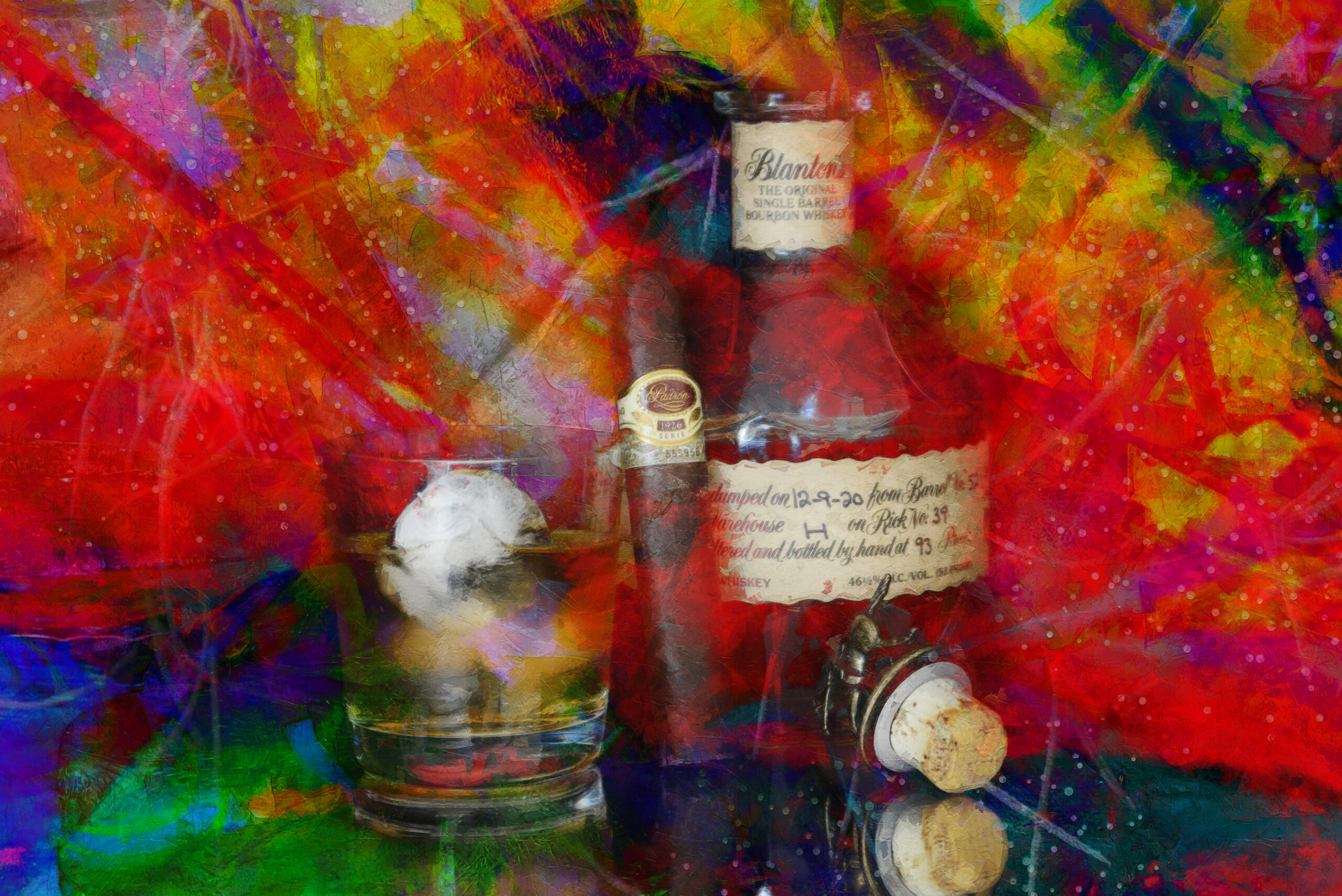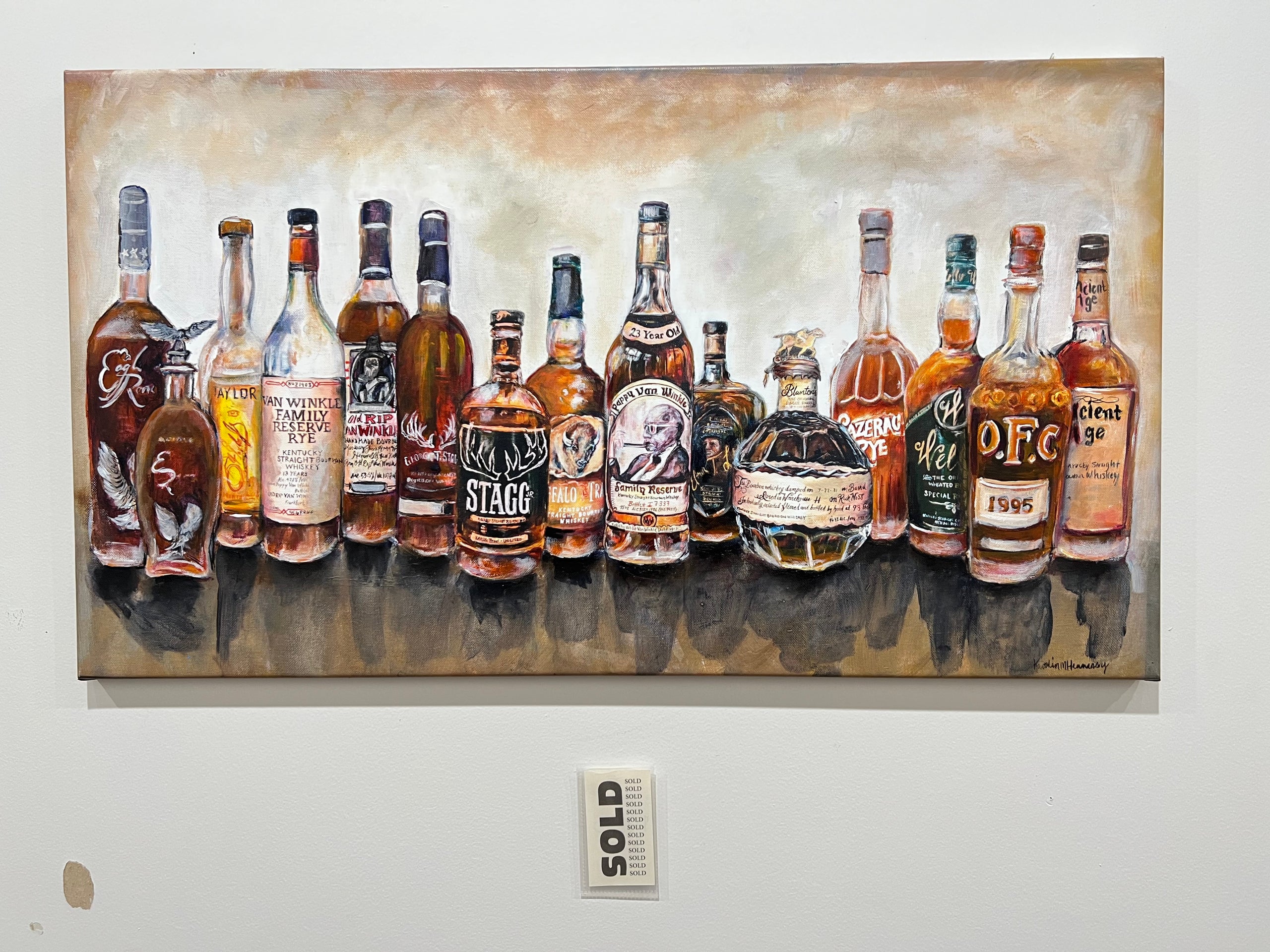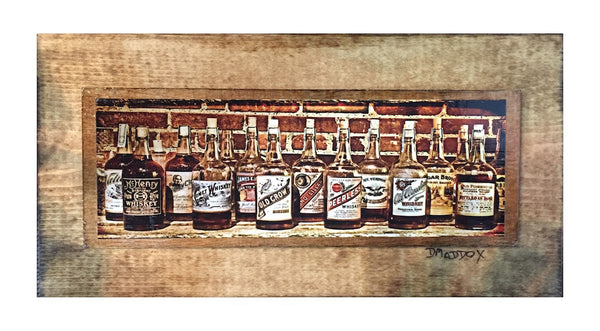Introducing the Beauty of Bourbon Art: A Homage to Craft Distillers
Introducing the Beauty of Bourbon Art: A Homage to Craft Distillers
Blog Article
The Significance of Whiskey Art in Celebrating Heritage and Craftsmanship in the Beverage Sector
The elaborate relationship in between whiskey art and the party of heritage and workmanship within the beverage market can not be overstated. Via thoughtfully designed bottles and tags, whiskey brand names encapsulate their historic roots and the artisanal abilities that define their production techniques.
The Historical Origins of Whiskey
At the heart of bourbon's allure exists a rich tapestry of historic roots that map back to old civilizations. The beginnings of scotch can be linked to the purification practices of the Sumerians and Babylonians around 2000 BCE, where very early types of fermented grain drinks started to emerge. Nevertheless, it remained in the Middle Ages that the art of purification evolved dramatically, particularly in Ireland and Scotland, bring about the creation of scotch as we understand it today.
The term "whiskey" itself stems from the Gaelic word "uisce beatha," suggesting "water of life." This expression underscores the cultural relevance of bourbon in Celtic societies, where it was commonly related to rituals, celebrations, and common bonding. By the 15th century, purification came to be a recognized craft within reclusive areas, leading the way for the establishment of lawful distilleries.
As profession courses expanded, scotch's appeal expanded, transcending regional limits and recording the interest of lovers worldwide. Realism Art. This historical journey shows not just the workmanship behind bourbon manufacturing yet also its important duty in social and social contexts, marking it as a significant drink throughout background
Artistic Expression in Branding
Whiskey branding stands as a compelling crossway of creativity and business, where aesthetic identification plays an essential function in forming customer assumption. The appearances of whiskey tags, packaging, and advertising and marketing materials reflect not just the brand's tale however also its core worths and heritage. Via imaginative expression, distilleries convey a narrative that resonates with customers, stimulating emotions and sparking links.
The use of shade, typography, and images in branding serves to separate items in a saturated market. For instance, conventional motifs might stimulate a sense of credibility and craftsmanship, while modern-day styles can signify technology and forward-thinking. This critical creative instructions enhances brand name recognition and commitment, allowing customers to forge an individual relationship with the scotch they pick.
Additionally, artistic expression in branding usually functions as a party of regional heritage. Distilleries regularly integrate neighborhood signs or historical recommendations into their styles, creating a feeling of place that welcomes customers to take part in a more comprehensive cultural experience. Inevitably, the artistry behind scotch branding not just enhances aesthetic appeal however additionally enriches the general story of the brand, promoting a deeper gratitude for the workmanship and heritage embedded in each container.
Workmanship in Bottle Style
The artistry apparent in bourbon branding extends beyond aesthetic identification to encompass the craftsmanship associated with bottle style. Each container acts as a vessel not simply for the spirit within, but likewise for the tale it outlines its origin, quality, and practice. The design process needs precise interest to information, as components such as product, closure, and form add substantially to the general understanding of the scotch.
Workmanship in container style entails selecting high-grade glass that can enhance the whiskey's shade and clearness, while also supplying a tactile experience for the consumer. The shape of the bottle need to be both practical and visually attractive, usually showing the heritage of the brand name. Numerous distilleries choose unique shapes or embossed logo designs that stimulate a feeling of authenticity and background.
Additionally, the label layout and typography play a crucial function in communicating the brand visit the site name's narrative. Bourbon Art. A well-crafted container not only astounds the consumer's eye yet likewise enhances the brand's dedication to high quality and practice. In this method, the craftsmanship of bottle layout ends up being a vital element of the whiskey experience, combining artistry with a profound regard for heritage
Cultural Value of Whiskey Art
Commemorating tradition and workmanship, the cultural relevance of whiskey art transcends plain appearances, intertwining with the more information historical and social stories of the areas from which it stems. Each container works as a canvas, illustrating the distinct tales, mythology, and traditions that have formed local whiskey-making methods. The intricate styles often reflect the heritage of the distillers, integrating icons and motifs that resonate with the society and worths of their communities.

Furthermore, scotch art plays a vital function in communal celebrations and events, functioning as a substantial link in between people and their shared experiences. By valuing the creativity in bourbon packaging, consumers grow a deeper understanding and regard for the craft, inevitably enhancing their enjoyment of the beverage his response itself.
Modern Trends in Whiskey Discussion
Recently, the discussion of scotch has actually advanced to reflect modern tastes and fads while still honoring conventional workmanship - Realism Art. Distilleries are progressively concentrating on visual elements that improve the overall alcohol consumption experience, connecting the void between heritage and modernity
Ingenious container designs have actually emerged, commonly including lasting products and artistic tags that tell compelling tales. Several brands now collaborate with neighborhood artists, infusing their products with distinct visual expressions that resonate with consumers. Furthermore, limited-edition launches are often packaged in collectible containers, adding value and appeal for connoisseurs.

Final Thought
In verdict, scotch art offers as an important avenue for expressing the heritage and craftsmanship intrinsic in the drink industry. With intricate branding, innovative container designs, and culturally considerable artistic aspects, bourbon brands successfully recognize their practices and attach with customers.


Workmanship in container style entails selecting high-quality glass that can boost the bourbon's shade and clearness, while also providing a responsive experience for the customer. In this method, the craftsmanship of bottle layout ends up being an important element of the whiskey experience, combining creativity with a profound regard for heritage.
In verdict, scotch art serves as a vital avenue for revealing the heritage and craftsmanship inherent in the drink market.
Report this page